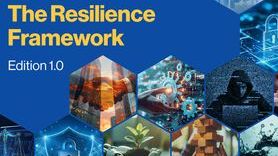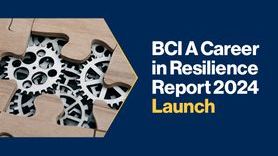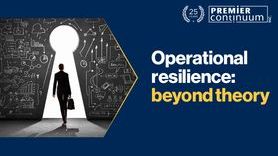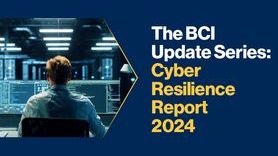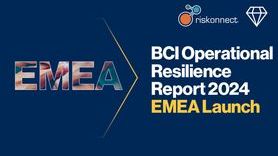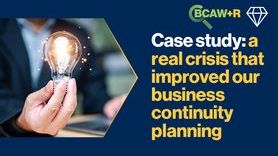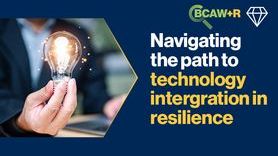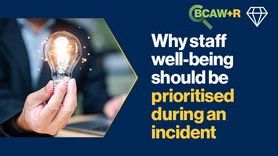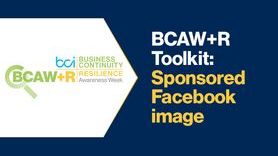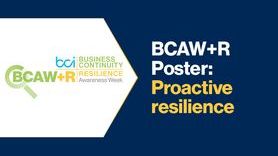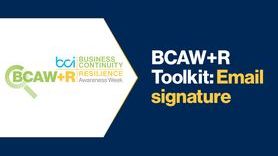Facing the heat: Five critical climate considerations to protect organizations from accelerating risk
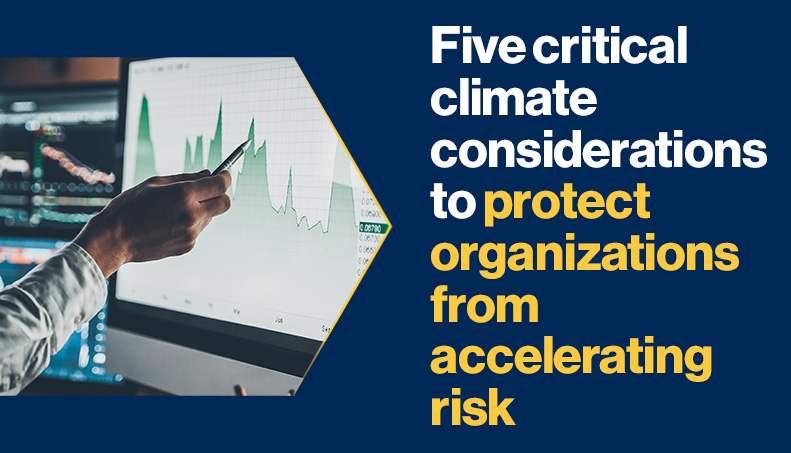
As the planet heats up, the number and intensity of adverse climate and weather-related events is rising to such an extent that extreme conditions - from heavy rainfall to hurricanes – are now ranked by the World Economic Forum as the top risk for the next decade[1].
Far from limited to planet and population, the consequences are far reaching for business, with $380 billion in economic losses - $262 billion of which were uninsured – being reported in 2024 by professional services firm, Aon[2]. Worse still, direct losses from physical impact, adverse effects on global supply chains, and disruptions to both people and operations will only increase as business moves on, with the Intergovernmental Panel on Climate Change calculating that what was a once-in-twenty-year-event will become annual by the end of the century[3].
Corporate climate
No industry is fully protected from such uncontrolled events. The Institute of Environmental Management and Assessment already estimates that at least 50% of UK businesses are already feeling the impact of extreme weather events[4]. From flooding and storms to more severe heatwaves, it all increases the level of risk, with 52% of organizations citing increased operating costs, 47% reporting supply chain issues, and 35% claiming for physical damage due to an increasingly severe climate[5]
Resource scarcity adds another layer to this growing challenge, with regulations growing even more stringent as governments, the public, and international committees alike express more concern for the natural environment. For instance, lithium, which is used in everything from computers and smartphones to solar panels, is becoming more difficult to ethically source, calling for increased emphasis on ethical practices centered around a more circular economy. Failure to address this could result in severe reputational damage, not to mention serious litigations, highlighting the need for a more strategic approach to planetary matters from every company.
Data is key to fostering such strategy, allowing organizations around the world to assess their risk, secure adequate coverage and protection, and step up their solutions, rather than falling victim to circumstances that otherwise seem to be out of leaders’ control. Indeed, the following five considerations are a great place to start, bringing both insights and outcomes up-to-date for a more agile response to such a risk-filled landscape.
1. Climate intelligence
Although we cannot control the environment, it is possible to accurately predict it. Traditionally, climate forecasts have been based around data that’s around ten years old, resulting in failure to see weather-related incidents – which are becoming more fitful in nature – coming. Nevertheless, as technology advances, insights can be recorded in almost real time, allowing organizations that make appropriate use of the latest sensors and satellite data to better prepare for any weather or climate-related events that may be on the horizon. This is known as climate risk intelligence, which is key to understanding the risks institutions might face and what could be done about it.
Clarity is imperative when it comes to prevention, which is why teams must delve deep into any challenges – both present and future – that might impact assets or operations. If this is something you’re unfamiliar with, it’s always possible to invest in intelligence training, teaching internal experts to make the most of available data, imagery, and insights.
2. Crisis response and litigation protection
Of course, even the best-laid plans can go awry and there’s no guarantee that organizations will be fully protected from unexpected storms. As such, in addition to taking preparatory measures, companies must also develop detailed crisis response plans. This helps to keep disruptions at a minimum, reducing additional losses from ongoing downtime.
The data required to create such a plan can also prove useful in the event of an environmental inquiry or litigation. In fact, as environmental regulations become more stringent, the right intelligence can make or break organizations’ survival. Climate litigation was actually identified by the Intergovernmental Panel on Climate Change as one of the key factors that will shape future climate policy[6], particularly as global warming and its impacts become more prominent within commercial law. Inaction, in light of these frameworks, can lead to being taken to court; having the right data is therefore essential to demonstrate that sufficient thought has been put into the company’s green strategy, providing tangible evidence that organizations are keeping pace with both environmental compliance and social expectations.
3. Risk analysis for insurance
Another key concern is the growing gap in protection as insurance companies are paying out more to cover losses induced by climate events. Practitioners must therefore learn to work with insurance company predictions, without being afraid to bring their own data to the table. Collaborating with industry stakeholders and making use of the latest forecasting technologies can help insurance companies to revise their pricing strategies, keeping insurance premiums at a reasonable rate whilst ensuring all potential events have been considered for appropriate cover.
4. Advisory services
With so much at stake, leaders must ensure they use all the data intelligence within their access and power. Moreover, they must guarantee that they know how to analyse and interpret this both accurately and confidently, in order to benefit from reliable conclusions that guide future actions, without the risk of errors and lawsuits which could cost thousands.
5. The power of AI
Finally, in this new era of climate risk, it’s imperative that leaders embrace all technological advancements – including AI. Whilst artificial intelligence can never replace human expertise when it comes to planning appropriate courses of protection and action, AI systems are capable of processing vast amounts of climate data, allowing companies to take advantage of the up-to-date data sets that are now available to inform and provide valuable insights.
Future-forward planning
Ultimately, data is key to facing growing climate volatilities and organizations that prioritise strategic, analytics-backed planning will be best positioned to survive. No one can control climate risk, but there is the option of accurate predictions, putting the future of organizations back in their own hands and learning that, despite adversity, it’s still possible to thrive.
[1] https://www.weforum.org/publications/global-risks-report-2024/digest/
[2] https://www.aon.com/en/insights/reports/climate-and-catastrophe-report.
[3] https://www.ipcc.ch/site/assets/uploads/2018/02/WG1AR5_Chapter12_FINAL.pdf
[4] https://www.iema.net/articles/half-of-uk-businesses-already-impacted-by-climate-change
[5] https://www.iema.net/articles/half-of-uk-businesses-already-impacted-by-climate-change
[6] https://www.lse.ac.uk/granthaminstitute/publication/global-trends-in-climate-change-litigation-2022




